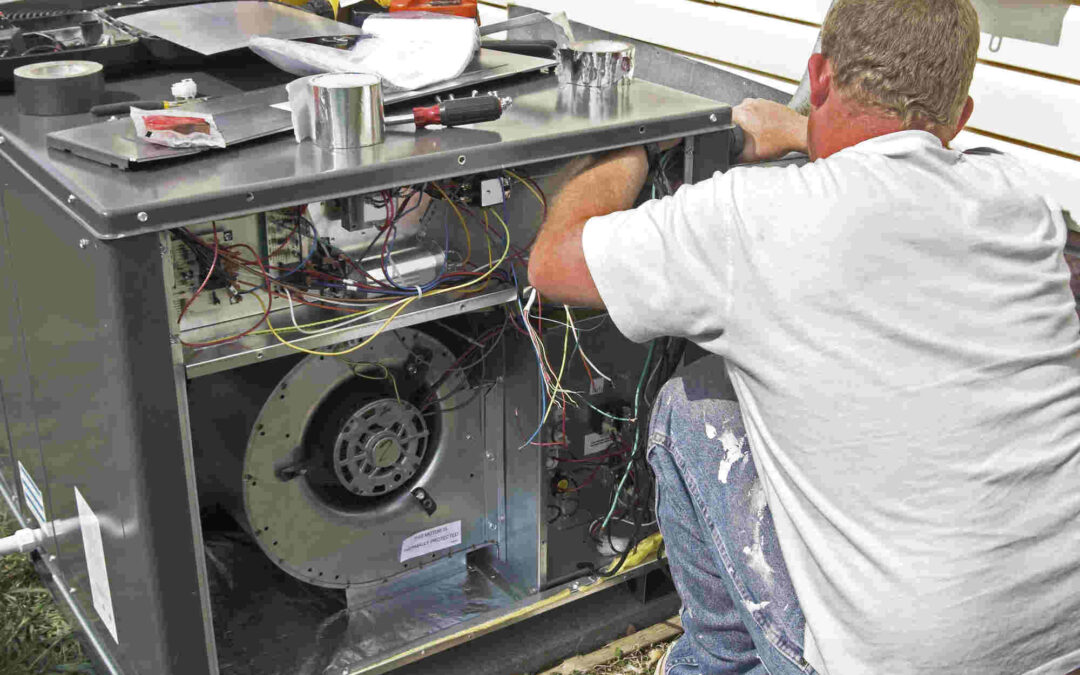Our ancestors had to helplessly face the onslaughts of the environment that they lived in. They had no way to protect themselves from the heat and cold that the seasons brought. Lighting fires and wearing more layers of clothing or finding a cooler shelter, only marginally helped reduce the discomfort. But modern technology has helped give us the power to control the temperature of confined spaces. We humans still have not been able to successfully control the weather, although we can predict it. What we can do is control the temperature of our homes and work spaces. The way in which we do this is by installing air conditioning units or heater or both. Earlier we had to crank up the heat or lower the temperature by tinkering with each individual device. But today we can control the temperature of our entire home or workplace by using only one controller.
Thermostats help us control the heating and cooling of a room or building. You can have thermostats fitted to air conditioning units or heater or even on both. Usually the thermostats are found on central heating or cooling systems. This gives control over the heating or cooling of an entire building. Even if the heating or cooling unit does not come with a thermostat you can easily buy it and get it installed. The thermostat can indicate the temperature that the device is set at, you can accordingly use the thermostat to reduce or increase the temperature of the room or building. So, we see that thermostat essentially is the controlling unit of a heating or cooling device.
Different kinds of Thermostats
There are many different kinds of thermostats that are in use today. The oldest form of thermostat was a mercury thermostat which used the expansion and contraction of mercury to measure and regulates the temperature. Bimetallic strips were also used to measure and regulate the temperature. The Automotive thermostat uses wax pellets, which melts and expands, to regulate and measure the temperature. Electronic thermostats are more popular these days. Bimetallic switching thermostats switch on and off depending upon the rise and fall of temperature.
In this device if the temperature falls below the set temperature the heating unit is switched on but if it rises above the set temperature the device switches off. Modern thermostats are digitalized. This means that no moving elements are used to control the unit. The digital thermostats depend on thermistors and thermometers to measure the temperature. Using the digital thermostats one can set the temperature easily, while the set temperature in the older thermostats were fixed. The digital thermostats may require regular batteries or can even uses power off of the cooling or heating unit itself. The digital thermostats may even offer a digital clock, which makes the device even more attractive.
So, we see that different types of thermostats functions in different ways. Some use simple expandable and contractible elements to measure and regulate the device; while some use thermometers to do so. Either way all thermostats are effective, when it comes to keeping the temperate of the room in accordance with your preference.
Frequently Asked Questions:
1. What is a thermostat?
A thermostat is a device used to control the temperature of a room or building by regulating heating or cooling systems. It can be installed with air conditioners, heaters, or both, making it easy to adjust the temperature in confined spaces.
2. How do thermostats work?
Thermostats monitor the temperature and activate heating or cooling systems when the temperature falls below or rises above the set point. Modern thermostats, particularly digital ones, use sensors like thermistors to control the temperature with precision.
3. What are the different types of thermostats?
There are several types, including mercury thermostats, bimetallic strip thermostats, wax pellet automotive thermostats, and electronic thermostats. Digital thermostats are the most popular today, offering easy control and additional features like digital clocks.
4. How do digital thermostats differ from older models?
Digital thermostats don’t use moving parts. They rely on sensors to measure temperature and provide precise control. Older models like mercury or bimetallic thermostats use mechanical parts to regulate temperature and require manual adjustments.
5. Do digital thermostats require batteries?
Some digital thermostats run on regular batteries, while others can draw power from the heating or cooling unit itself. It depends on the model you choose.
6. Can I install a thermostat even if my heating or cooling system doesn’t come with one?
Yes, thermostats can be purchased separately and installed on most heating or cooling systems, allowing you to have better control over the temperature in your space.
7. How did early thermostats work?
Earlier thermostats used materials like mercury or bimetallic strips to measure and regulate temperature. For example, mercury would expand or contract based on temperature changes, switching the heating or cooling system on or off.
8. What is an automotive thermostat?
An automotive thermostat regulates the temperature in car engines. It uses wax pellets that melt and expand to control the flow of coolant and maintain the engine’s temperature.
9. Why are digital thermostats more efficient?
Digital thermostats offer more precise temperature control compared to older mechanical thermostats. They are programmable, allowing users to set temperatures based on time or occupancy, improving energy efficiency.
10. How do thermostats contribute to comfort in modern spaces?
Thermostats allow us to easily control the temperature in homes and workplaces, ensuring comfort in all seasons. With modern technology, you can maintain the desired temperature with minimal effort and maximum efficiency.



